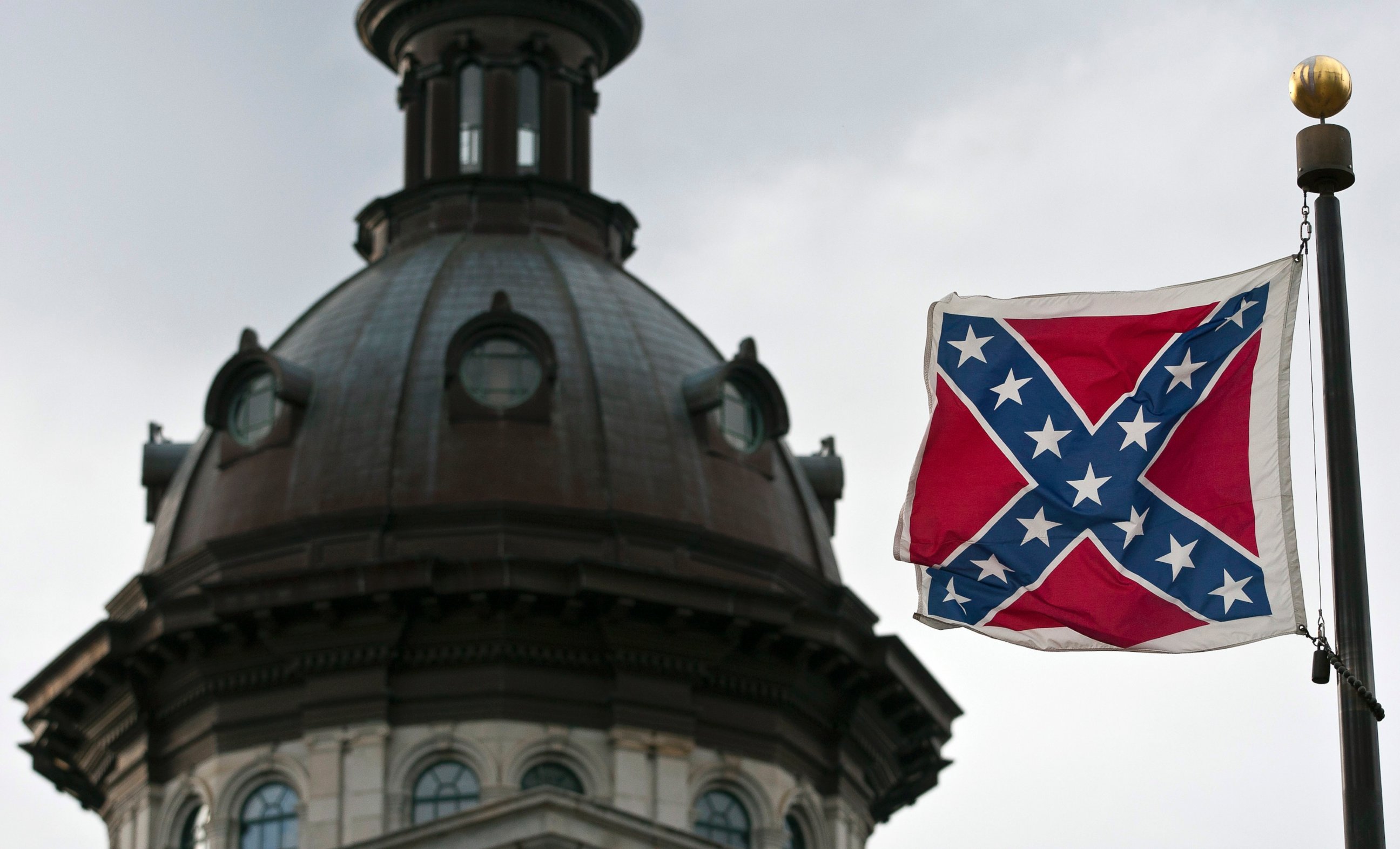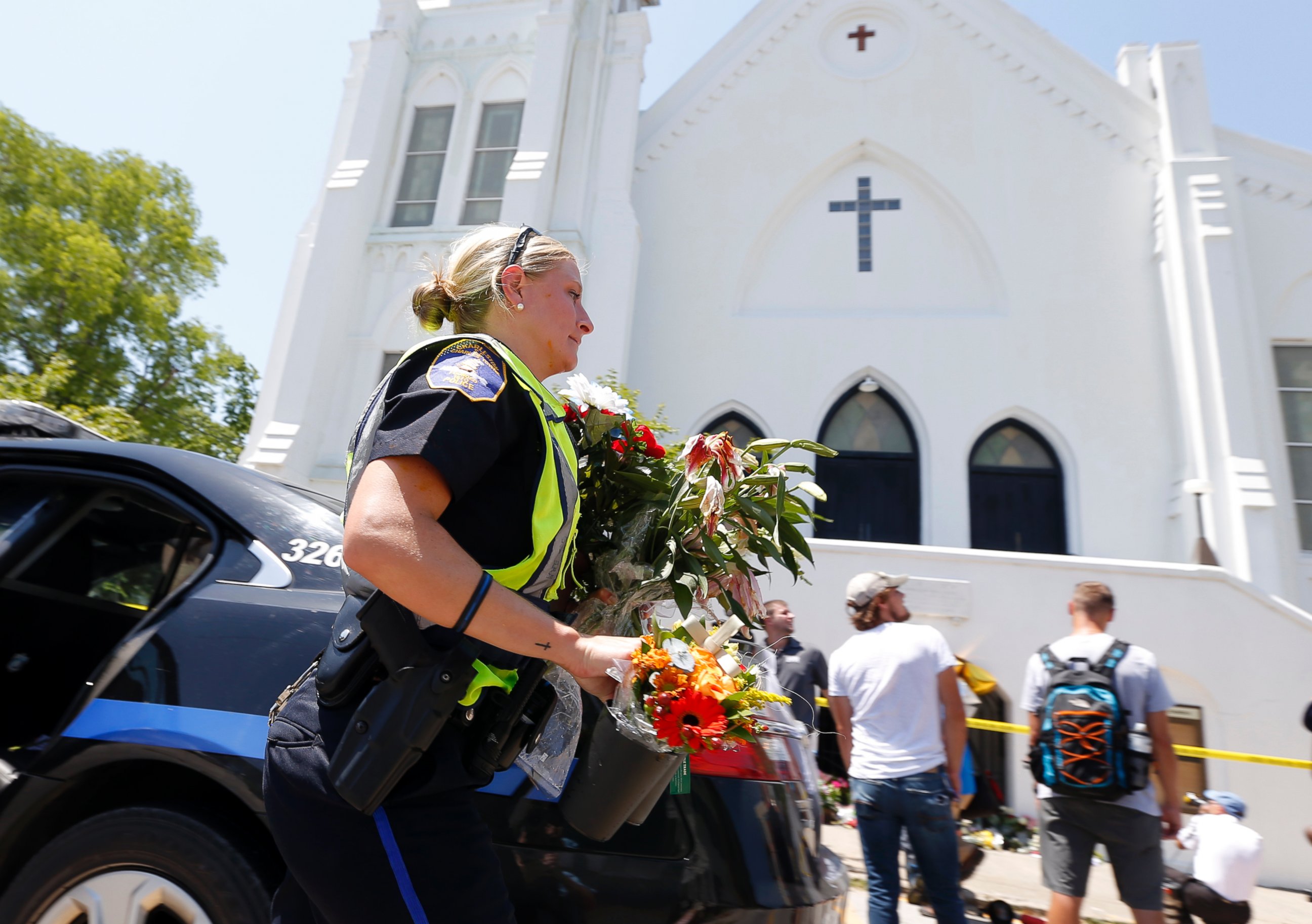Confederate Flag Flies in South Carolina: An Explainer on the Ongoing Debate
The flag was originally flown in response to the civil rights movement.
— -- The shooting of nine black parishioners at a historically black church in Charleston, South Carolina, on Wednesday night has reopened the controversy surrounding the state’s continued display of the Confederate flag on capitol grounds.
The Battle Flag of the Northern Virginia Army, made famous by Robert Lee but never formerly adopted as the national flag of the confederacy, was first placed above South Carolina’s State Capitol’s Dome in 1961. It arrived, like many other appropriations of the controversial symbol, in response to the civil rights and desegregation movements.
"This was a symbol of pushback on the part of white South Carolina leaders,” David Goldfield, Professor of history at the University of North Carolina and author of Still Fighting the Civil War, told ABC News.
Goldfield said the thinking behind the decision to fly the flag was “we’re going to put this flag in your face because we’re against race-mixing.”
Here is an explainer on the ongoing debate:
What is the history?
In 2000, legislators voted to move the flag from the top of the dome to the front lawn. It is currently illegal to remove the flag without additional legislation.
“What they did was take the flag down and put it right smack in the middle of state house grounds," Goldfield said, adding that it was “definitely more visible today than it was back then."
“We're trying to sow unity, a unity of purpose, a unity of commitment, a unity of resolve, so that we can confront racism in our midst. And that means certainly, symbolically, we can't have the Confederate flag waving in the state capital,” NAACP President Cornell Brooks said at a press conference in South Carolina today.
Proponents of the continued usage of the Confederate flag, such as the Virginia Flaggers and the Sons of Confederate Veterans, often argue that the flag is a symbol of heritage and not hate.

"The Virginia Flaggers call on all those of Southern ancestry to resist any and all endeavors to use this tragedy as a platform to erase our history and attack the honor of our Confederate veterans," the group wrote to ABC News in a statement.
Proponents of the continued usage of the flag argue that most Confederate soldiers did not own slaves and that their use of the flag is not rooted in animosity toward African-Americans, but rather a celebration of their ancestors who fought and died under the flag’s colors. But opponents of its usage argue that interpretation ignores history.
“The bottom line is that from historian’s point of view, the connection between the Confederate battle flag and white supremacy is unmistakable,” said David Goldfield.
“When in 1863 the Confederate congress was debating the issue of a flag, they made it clear that this was representing white supremacy,” he added.
South Carolina, which is one of five states that still doesn't have a state hate crime law, celebrated "Confederate Memorial Day" this past May, during which a large Confederate flag was displayed on the steps of the South Carolina State Capitol.
Why is the flag still flying?
Goldfield argues that the flag should continue to be displayed in a historical setting such as museums, but that its display above the state capitol and elsewhere throughout the country is an affront to the African American population.
“You share the state with 30 to 40 percent of the population are African Americans, for them this flag is the symbol of the confederacy which was formed to preserve and protect the institution of slavery and therefore this banner is not only obnoxious but extremely hurtful and a serves as a reminder of human bondage,” he said.

What happens after Wednesday's shooting?
Following this week's shooting, the flag issue seeped into the debate on the presidential campaign trail, with candidate Lindsey Graham, South Carolina's own senior Senator, suggesting that perhaps it’s time to “revisit that decision."
Gov. Nikki Haley, who was in tears during a news conference Thursday morning, had previously rejected the notion of removing the flag at a debate last year, saying it was a "sensitive issue."
Haley's press secretary told ABC News: "In South Carolina, the governor does not have legal authority to alter the flag. Only the General Assembly can do that."
According to a 2011 Pew Research poll, just 9 percent of Americans have a positive reaction to the confederate flag -- and just under a third have a negative reaction.
Deputy White House Press Secretary Eric Schultz told reporters today that President Obama “believes the Confederate flag belongs in museums.”
ABC News' Erin Dooley contributed to this report.
Get real-time updates as this story unfolds. To start, just "star" this story in ABC News' phone app. Download ABC News for iPhone here or ABC News for Android here.




